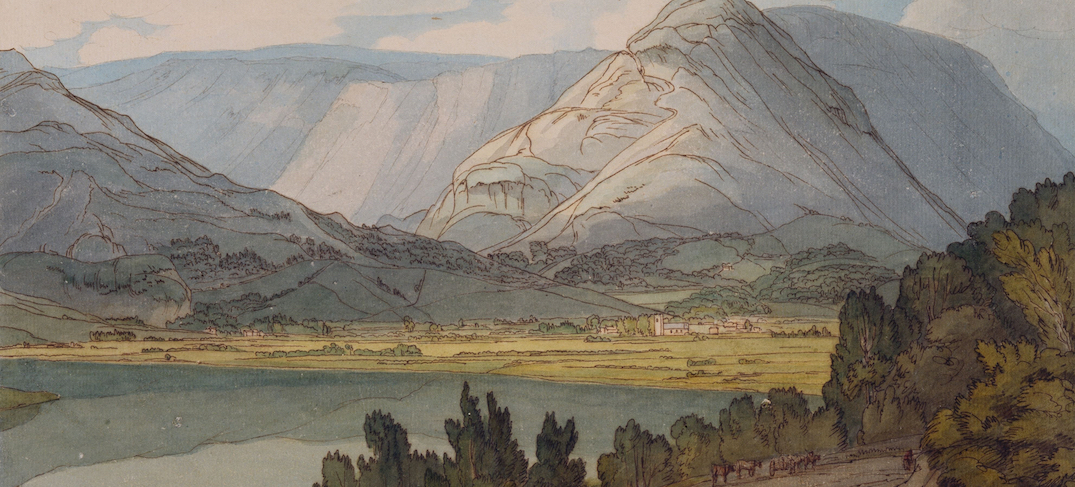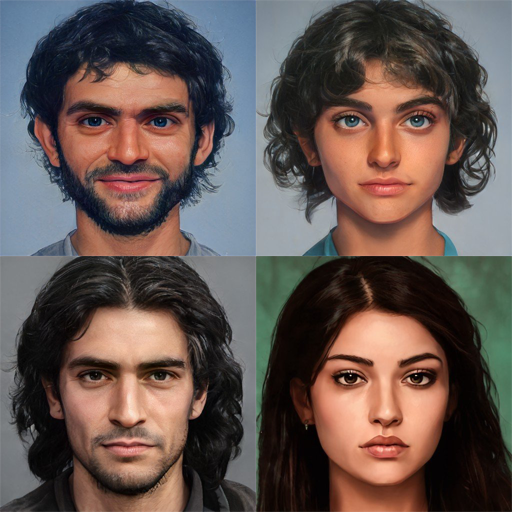Nimearan People
The Nimearan people are a halfling and human ethnic group hailing from the Western Odric Mountains. Forging an Empire across the plains north of the mountains in what is present-day Merida and Ellyrica, as well as portions of Aeilla and Gallaca, the Nimearans spread the dualistic Ashevite faith across western Galisea, before being made into a tributary state after the bloody Nimearean-Yulani War.
Nimearans trace their lineage to one of two now-defunct ethnic groups, the human Mards and halfling Dins. The epiphany of Uriret, the mystical founder of the Ashevite faith, first brought a tenuous peace through the blending of their religions that laid the foundations for a cultural integration. King Varazdat I would found the Kingdom of Nimeara in the years Before the Star, and through largely peaceful means, steadily expand the Kingdom's borders across the Elleric plains, Gallega even reaching parts of modern-day Merida. These people then steadily became the Nimearan society of old, a roughly evenly divided halfling and human society.
Today, most of the Nimearan people outside of the much smaller modern Kingdom have integrated into larger states or are members of confederacies with other cultures. Within the Kingdom, they are known for their hospitality and bombastic parties, especially to the humans of other societies. Nimearan culture has traditionally favoured insular community and protective risk-averse behaviour, and discouraged violence and competition. This has often been what the stagnation and decline of Nimearan culture, even after the fall of the Yuan-ti, is attributed to.
Culture
Major language groups and dialects
Most Nimearans speak the Nimearan language, an ancient tongue dating to the time of the Ancient Kingdom of Nimeara. Many Nimearan words are present in Elleryc and Aeillan, although this trend has reversed in the time After the Star, and now many Cyrenic and Aeillan words are present in Nimearan. Outside of the Kingdom and some of it's ancient satrapies, most Nimearans speak the common tongue of their surroundings, although most have a cultural aversion to venturing far.
Shared customary codes and values
Nimearans have a strong emphasis on communitarian living and have a very "go with the flow" attitude towards the world. Among human Nimearans, there is some reverence for authority in the form of respect for their nobility, however the nobility in turn are expected to be empathetic and wise. Hospitality is a major tenet of Nimearans, who will go through great lengths to ensure a guest is comfortable and welcome, and readily offer aid to those who need it.
Average technological level
Nimearan proximity to Cyrenica and Aeilla results in easy access to many of the newest modern innovations, if the adoption of these things is not widespread it is more to do with Nimearan's inward-focused culture. That said, recent Nimearan rulers have supported the construction of civic works and adoption firearms technology to improve their subjects lives and strengthen the defensive stature of the Kingdom of Nimeara.
Common Etiquette rules
Nimearans display their emotions readily and delight in sharing the pleasant ones with others. They are eager to take part in conversations, sometimes interjecting with their reactions or words of encouragement, although sometimes their excitedness can come off as rude to more reserved cultures. It is expected to keep oneself clean, however several ceremonial fgraces observed by others are not by Nimearans, such as avoding burping or slupring during or after a meal. Competition is frowned upon, although friendly contents are common.
Common Dress code
Nimearans wear lots of wool, fur, and cotton in colorful dresses and coats. It is dominated by the colors of the four elements - water, earth, air, and fire. Nimearan embroidery techniques are some of the finest in Galisea, and indeed their skill and work is a sought-after commodity on trade routes throughout the world. They tend to favor layers, except when uncomfortable to do so. Nimearans have ceremonial and fashonable styles of headress and footwear that they use to show status.
Art & Architecture
The most well known of Nimearan arts is the musical instrument of the duduk, a double-reed wind instrument thought to be a contribution of the ancient Dins when they migrated into the mountains. Nimearan architecture has several distinct features, including pointed domes and stone-vaulted ceilings, and a distinct method of concrete making that survives only within the Kingdom.
Common Customs, traditions and rituals
Nimearans are deeply devout, and overwhelmingly practice the Ashevite faith. Nimearans throw loud parties that stretch into the wee hours of the morning throughout the year and both for events like birthdays and weddings, harvests, or to bring about good fortune. They believe, according to Ashevite teachings, that good actions and altruistic thoughts will be rewarded in the afterlife, and those who have committed evil acts or otherwise hurtful ones will be judged harshly
Birth & Baptismal Rites
Births are one of the most celebrated occurences, with a procession from the local Fire Temple to the town square, culninating in a feast presided over by the expectant parent(s). Parents will choose a ceremonial name for their child, often based on events surrounding their birth or lives, in most cases an exaltation to brnig good fortune, although in some tragic cases it is a prayer for protection.
Coming of Age Rites
Both human and halfling Nimearans become adults at roughly the same time, around their 19th birthday. A religious ceremony is conducted but Ashevite priests where sacred belts and undershirts are bequeathed, to be worn for the rest of their lives. Around this time, or shortly before, it is common for young adults to seek an apprenticeship to enter a skilled trade, or to go to one of the colleges in the capital of Stelara, which are fairly affordable due to the charitable tenets of the Ashevite faith, which the Artashad dynasty has been keen supporters of.
Funerary and Memorial customs
Nimearans do not believe in burying or cremating their dead, viewing it as desecrating sacred elements of earth and fire. Funerals are solemn events followed by wakes which are as rancourous as most Nimearan events. Afterwards instead of burial or cremation, the dead are laid to rest in Towers of Silence. These towers are built on hills or low mountains away from population centers, where a pit is dug into the earth, and bodies are placed in layers seperated by metal grates. The sun beats down on these, and carrion birds pick at the human remains. Eventually, the bones fall into the pit, thus preventing the containimation of the earth with corpses.
Common Taboos
Refusing to aid a beleagured individual can lead to ostracisation and in some cases, exile. Nimearans are expected to clear their heads of evil thoughts.
Ideals
Beauty Ideals
Nimearans wear ornate headresses and shoes to compliment their colorful attire, especially during festivals and ceremonies. Facial grooming is a complex affair, with a developed culture of its own. The traits of honesty, thoughtfulness, and creativity are valued amongst all genders, and the ability to protect, be it through strength, intellect, or otherwise is valued too. The most sexualised parts of Nimearans are the genitals, thighs, and eyebrows.
Gender Ideals
Nimearan culture historically recognised three genders, however the Ashevite faith has become less rigid in it's interpretation of roles and desirable behaviours or traits and as such Nimearan culture has undergone somewhat of a shift, expressing ideals in neutral terms that anyone may embody. For examples, the expectation that men be defenders of the community has been replaced with the expectation that one protect those close to them, while the expectation that women be nurturing and educators has been supplanted by the expectation that the young are the responsibilty of the whole community.
Courtship Ideals
The reading of poetry and the playing of the duduk are common activities during the initiation of a relationship. Marriages are generally free arrangements between individuals, aside from the nobility of the Kingdom, which often enters into arranged marriages for political or religious reasons.
Relationship Ideals
Nimearans idealise relationships in terms of how they benefit the community. Homosexual relations have become equal and accepted to the same level of that as heterosexual ones, as the church establishment of the Federated Temples of Luva grew increasingly reformist in an attempt to shed the influences of outside actors in their interpretations of the faith's sacred texts.
Major organizations
The Kingdom of Nimeara is the remaining place in Getninia where ethnic Nimearans rule themselves, with communities outside beig subsumed into confederations with non-Nimearans or nominally in the Kingdom of Gallaca. The Artashad dynasty has reshaped the Kingdom into a reclusive but stable state based on the core of Ancient Kingdom. Ashvetism, the religious church of the Nimearan Kingdom, is practiced in Nimeara and parts of neighboring Gallaca, Ellyrica, and Merida in the communities of Nimearans present in those regions.



